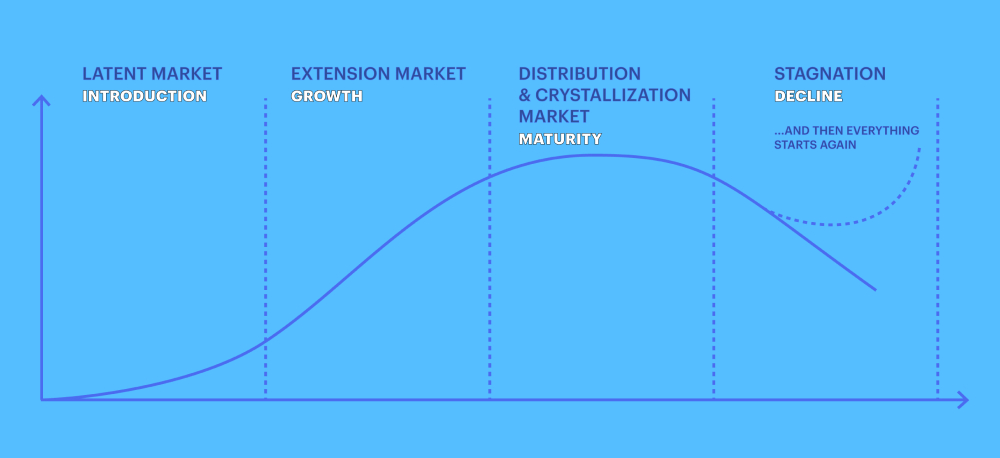Guide to Successful Brand Positioning, Part II
In Part 1 of our Guide to Successful Brand Positioning, we discussed Core Product Positioning, Actual Product Positioning and Augmented Product Positioning.
If you haven’t read Part 1 of Guide to Successful Brand Positioning, click here.
Read on for Part 2.
The positioning development process consists of 9 basic steps. We will review all of them below.
The first steps require market research. To do the research, you can use interviews with consumers, data on the competitors’ websites, their commercial offers, information on packaging and, of course, communications messages in the media.

Step 1 – Collect data on the geographical and socio-demographic characteristics of the target market.
Divide it into specific segments depending on the distinct features of the product or service. Besides that, behavioral or psychographic characteristics could be used as a segmentation basis (see below).
Step 2 – Calculate the financial potential of each segment by multiplying the quantitative indicators (collected in Step 1) by the average cost of the product or service and by purchasing frequency for the chosen period of time (month, year).
This research will give you an understanding of the financial attractiveness of every market segment.
Step 3 – Assess the market shares and promotional activity of competitors in those segments
Step 4 – Based on the above data, choose the best segment for targeting in terms of profit and future promotion costs.
Step 5 – Describe the behavioral characteristics of target consumers.
Where, when, how and how often do they choose a product? What factors influence their choice, and which consumer problems does the brand solve at each product level (core, actual, augmented)?
Step 6 – Analyze the characteristics of the selected audience in terms of their values, habits and beliefs (psychography).
Step 7 – Interview consumers, find out the competitors’ actual positioning and draw up a Perceptual Map (see Figure 3 below) based on the collected data.
Perceptual Maps are visualization charts that use two axes to represent the opposite characteristics of brands (for example, cheap and expensive, conservative and technological, slow and fast, etc.) These will allow you to understand the current positions of existing brands on the market in the consumers’ minds and identify unoccupied niches.
Step 8 – Based on the collected information, choose the free and most promising point of differentiation.
Step 9 – State the essence of your positioning in one easy-to-remember sentence. The company will do its best to fix the chosen image through clear and sufficient communication with the consumer.

An example of positioning for a company:
- Name? – Bloomingdale’s department store chain.
- Who is the product for (market segment) for? High-and-middle-income American buyers who follow fashion trends.
- What problems does it solve? – Helps those who wish to purchase high-quality goods.
- How does it differ from similar stores? – Unlike other department stores, it allows you to make your purchases in a theatrical way.
- Why buy (emotional positioning based on positive experience)? – It makes shopping fun.
Change Positioning or Keep the Same Positioning Forever?
Even if you developed your brand positioning following all the rules, that doesn’t guarantee success.
The customer may misunderstand or miss your communications messages in the media. You may promise them something hard to believe in reality (RTB). Modern consumers rarely take the written word for granted.
Therefore, it is important to regularly (at least once a year) measure the current knowledge of the brand and understanding of its positioning by the target audience. The frequency depends on the market and its stage of development.
If such studies show inconsistency or negative perceptions, it is necessary to conduct a deep analysis of the reasons and consider repositioning.
The main reasons for repositioning are:
1. Image quality deterioration, that is:
- The product does not have a sustainable image
- Associations with the product do not meet the target
- Force majeure negative
2. Changes in consumer behavior, that is:
- Emergence of new values and preferences
- Nostalgia for old values
3. Change of company strategy, that is:
- Launch of a new line of business
- Copying product image by competitors
Examples of Positioning Based on the Market Life Cycle.
There is another important factor influencing the choice of positioning – the life cycle of the market in which the product exists.
There are 4 main stages of development of any market (for more details, see the “Main Stages of Market Development” – will place link after writing the article):
1. Latent market (introduction)
2. Extension market (growth)
3. Distribution & Crystallization Market (maturity)
4. Stagnation (decline)
Each of them has its positioning specifics.

Latent Market
The product is just being born; the competition is low or almost non-existent. Manufacturers need to maximize the audience of users by explaining to them why the offered products are required and how best to use them.
A profitable strategy would be functional leadership using core product positioning.
Extension Market
Leaders are starting to appear, but there are not many of them yet, and the priority is to achieve maximum market coverage and extend this stage through expansion and growth in demand. That is the time to collect the most significant profits! Strategies for functional superiority over competitors with an emphasis on actual & augmented product positioning come in handy here.
Distribution & Crystallization Market
In high competition, investments are pouring in, and there are many customers, the products are familiar to consumers who are comfortable with using them and have accepted them as part of their lives. Demand is stable, market capacity growth and sales are minimal, and profits are declining. Here, companies can use strategies of image differentiation, leadership in a niche (depending on financial capabilities and position in the market), or promises of a better consumer experience.
Stagnation Market
Sales and profits are falling, margins are declining, penetration and competition have reached their ceiling, and demand is well below supply. It is reasonable for companies to try to minimize the product range and promotion investment, gradually curtailing the business. It’s time to change the niche or market or, as a result, change your positioning.
And then everything starts again.





